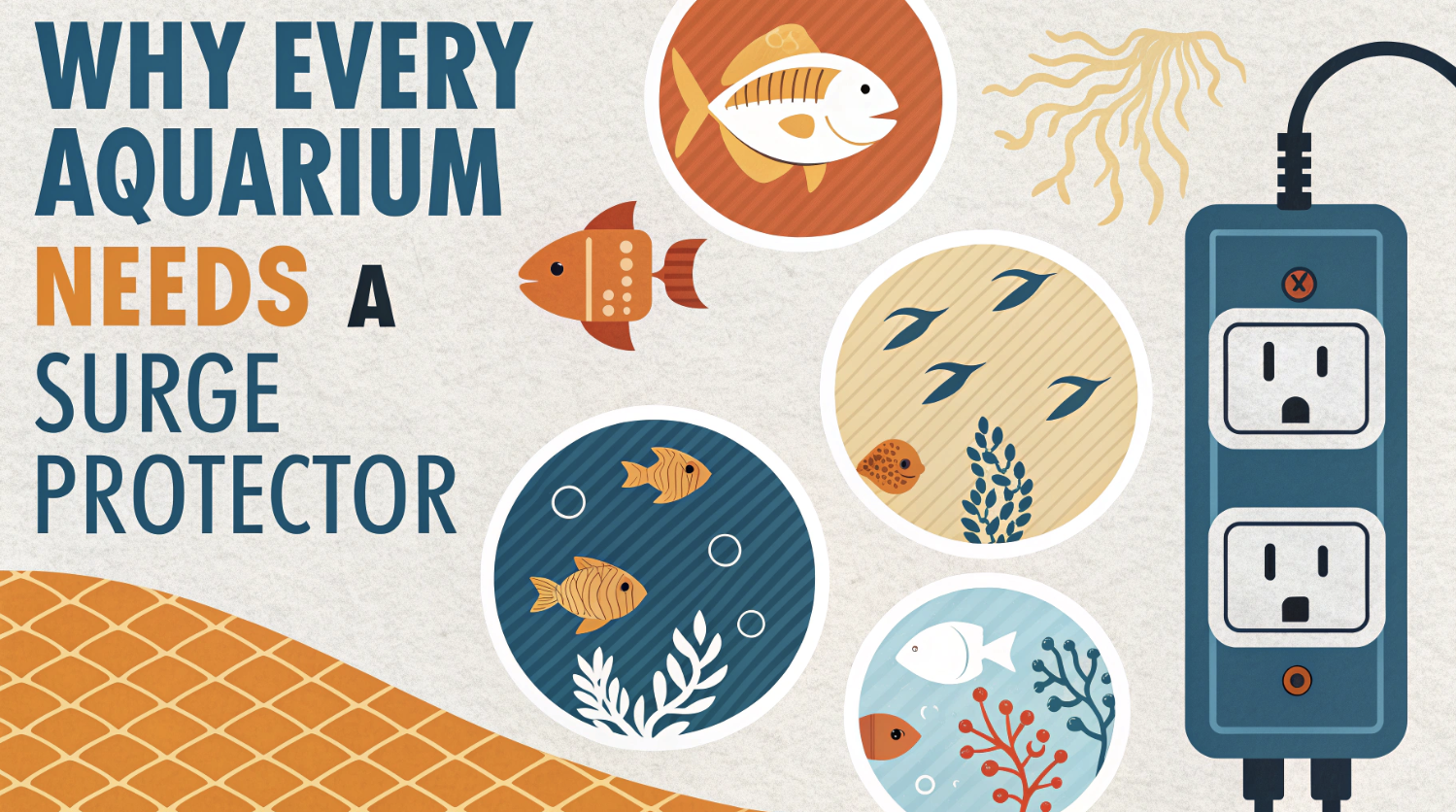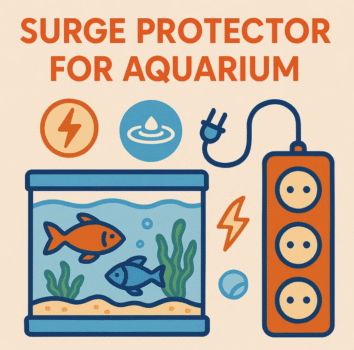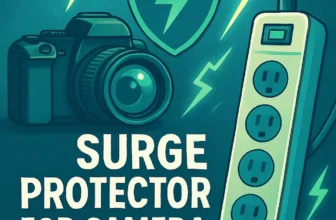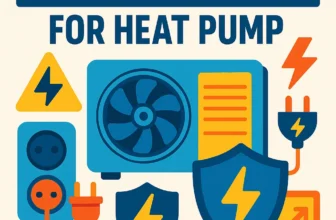Published By: Sean Hudson | Last updated on September 22, 2025 and reviewed by Editorial Team

Waking up to a disaster – your aquarium equipment is fried, and your underwater world is on the brink of collapse. It’s a nightmare scenario, right? One minute everything’s humming along, and the next, a power surge strikes, taking out your heaters, filters, and lighting systems. The very equipment that keeps your aquatic friends thriving is also its Achilles’ heel. But what if you could safeguard your investment and keep your fish and plants safe from the unpredictable nature of electrical fluctuations?
Enter the hero of the story: a surge protector designed specifically for aquarium setups. It’s like having a guardian angel for your tank, shielding it from sudden surges and spikes that can wreak havoc on your equipment. With the surge protector installed, you’re not just protecting your gear; you’re preserving the delicate balance that keeps your aquatic ecosystem healthy and stress-free.
So, don’t leave your underwater world to chance – take control and give it the protection it deserves!
The Risks of Power Surges for Aquariums
How Power Surges Occur
Common causes of power surges in homes
Power surges can strike unexpectedly, often caused by everyday events in your home. Lightning strikes during storms are a major culprit, sending sudden spikes of electricity through your wiring. Appliances like refrigerators or air conditioners switching on and off can also create surges. Even routine maintenance by your utility company can lead to fluctuations. These surges may seem minor, but they can wreak havoc on sensitive equipment, especially in an aquarium setup.
Why Aquariums are particularly vulnerable
Aquariums rely on a network of electrical devices to maintain a stable environment. Equipment like heaters, filters, and lighting systems operate continuously, making them more susceptible to power surges. Standard power strips often fail to handle the moisture-rich conditions around aquariums, increasing the risk of electrical malfunctions. Without proper protection, a single surge could disrupt your entire system, leaving your aquatic life at risk.
Potential Damage to Aquarium Equipment
Effects on heaters, filters, and lighting systems
Power surges can cause irreversible damage to your aquarium equipment. Heaters may overheat or stop working entirely, leading to dangerous temperature fluctuations. Filters and aeration systems can experience motor burnout, disrupting water circulation and oxygen levels. Lighting systems, essential for plant growth and fish health, may flicker or fail altogether. These failures can happen instantly, leaving you scrambling to replace critical components.
Long-term costs of replacing damaged equipment
Replacing damaged equipment isn’t just inconvenient—it’s expensive. A high-quality heater or filtration system can cost hundreds of dollars. Frequent replacements due to power surges add up quickly, draining your budget. Investing in a surge protector is a cost-effective way to safeguard your equipment and avoid these recurring expenses.
Impact on Aquatic Life
Sudden temperature changes from heater failure
Your aquarium’s heater plays a vital role in maintaining a consistent water temperature. A power surge can cause the heater to fail, leading to sudden temperature drops or spikes. These abrupt changes can stress your fish, weaken their immune systems, and even result in fatalities.
For tropical species, which require precise temperature ranges, the risks are even higher.
Stress and harm to fish and plants from equipment malfunctions
When filters or aeration systems fail, water quality deteriorates rapidly. Oxygen levels drop, and harmful toxins can build up, creating a hostile environment for your aquatic life. Plants may wither without proper lighting, disrupting the ecosystem balance.
These issues not only harm your fish but also make it harder for you to restore stability in your aquarium.
Benefits of Using a Surge Protector for Aquarium Setups
Protecting Your Investment
Safeguarding expensive aquarium equipment
Your aquarium setup likely includes high-quality equipment like heaters, filters, and lighting systems. These devices are not only essential but also costly to replace. A surge protector for aquarium setups acts as a barrier, shielding your equipment from sudden electrical spikes. Without this protection, a single power surge could destroy your devices in seconds, leaving you with a hefty bill. Investing in a surge protector ensures your equipment stays safe, extending its lifespan and saving you money in the long run.
Reducing the risk of costly repairs or replacements
Replacing damaged equipment isn’t just expensive—it’s also time-consuming. Imagine scrambling to find a new heater or filter while your aquatic life suffers. A surge protector minimizes this risk by absorbing excess voltage before it reaches your devices. This small investment can save you from the frustration and financial burden of frequent repairs or replacements.
Ensuring Aquarium Stability
Maintaining consistent water temperature and filtration
Aquariums thrive on stability. A surge protector ensures your heater and filtration systems continue to operate without interruption, maintaining consistent water temperature and quality. This stability is crucial for the health of your fish and plants. Without it, even a brief disruption could lead to harmful fluctuations that stress your aquatic life.
Preventing disruptions to the aquarium ecosystem
Your aquarium is a delicate ecosystem where every component plays a role. A power surge can disrupt this balance, causing equipment failures that harm your fish and plants. By using a surge protector, you prevent these disruptions, ensuring your aquarium remains a safe and stable environment.
Peace of Mind for Aquarium Owners
Knowing your aquarium is protected during storms or power fluctuations
Storms and electrical fluctuations are unpredictable, but they don’t have to be stressful. A surge protector gives you confidence that your aquarium is safe, even during severe weather. You can rest easy knowing your equipment and aquatic life are protected from sudden electrical spikes.
Reducing stress and worry about unexpected electrical issues
Owning an aquarium should be a joy, not a source of constant worry. A surge protector eliminates the anxiety of unexpected electrical problems. With this simple device, you can focus on enjoying your aquarium rather than worrying about what might go wrong.
Common Misconceptions About Surge Protectors for Aquariums
Many aquarium owners misunderstand how surge protectors work. Here’s a quick breakdown to clear up some confusion:
|
Misconception |
Explanation |
|---|---|
|
Surge protectors are safe for all aquarium equipment |
Some surge protectors can fail and even pose fire risks if their components wear out. |
|
GFCI protection is sufficient for aquariums |
GFCI strips can cut power to all devices if one faults, which isn’t ideal for aquariums. |
|
All surge strips are equally effective |
Surge strips have a limited lifespan and may not handle large surges effectively. |
Understanding these misconceptions helps you make informed decisions when choosing the right surge protector for your aquarium.
How to Choose the Best Power Strip for Aquarium Use
Key Features to Look For
Joule rating and its importance
When selecting a power strip for aquarium setups, the joule rating is a critical factor to consider. This rating measures how much energy the surge protector can absorb before failing. A higher joule rating offers better protection against voltage spikes, which is especially important for sensitive electronics. While most surge protectors provide adequate defense for aquarium equipment, choosing one with a higher joule rating ensures added safety and durability. This feature becomes even more valuable if your aquarium relies on high-end devices like advanced heaters or LED lighting systems.
Number and type of outlets needed
Aquariums often require multiple devices to function seamlessly, from heaters and filters to lighting and aerators. A power strip for aquarium setups should have enough outlets to accommodate all your equipment. Look for models with a mix of standard and spaced outlets to fit larger plugs without overcrowding. This flexibility ensures that every device has a secure connection, reducing the risk of loose plugs or electrical faults.
Additional Considerations
Surge protectors with built-in timers or smart features
Modern surge protectors come with advanced features that can enhance your aquarium’s efficiency. Built-in timers allow you to automate lighting schedules, promoting healthy plant growth and maintaining a natural day-night cycle for your fish. Smart surge protectors take it a step further by enabling remote control through apps, giving you the ability to monitor and adjust settings even when you’re away.
Waterproof or moisture-resistant options for aquarium setups
Aquariums create a moisture-rich environment, which can pose risks to standard surge protectors. Opt for models designed with waterproof or moisture-resistant materials to prevent corrosion and electrical hazards. These features are particularly crucial for saltwater aquariums, where salt creep can damage unprotected components.
A moisture-resistant aquarium power strip ensures long-term reliability and safety. Choosing the best power strip for aquarium use from these trusted brands guarantees peace of mind and long-lasting performance.
Setting Up and Maintaining Your Aquarium Power Strip
Proper Installation Tips
Placement to avoid water exposure
Positioning your power strip correctly is crucial for safety. Keep it elevated and away from any potential water splashes or spills. Placing it on a shelf or mounting it on a wall near your aquarium ensures it stays dry. Avoid placing it directly under the tank or in areas prone to condensation. Moisture can lead to corrosion or electrical hazards, putting your equipment and aquatic life at risk.
Ensuring all critical equipment is connected
Connect all essential devices, such as heaters, filters, and lighting systems, to the surge protector. This ensures every piece of equipment in your aquarium setup benefits from protection against power surges. Double-check that each plug fits securely into the outlets to prevent loose connections, which could lead to malfunctions. Prioritize critical devices to maintain the stability of your aquarium environment.
Regular Maintenance and Checks
Inspecting for wear and tear
Regularly inspect your surge protector for signs of damage. Look for frayed cords, discolored outlets, or any unusual odors. These issues indicate the device may no longer function safely. Surge protectors have a limited lifespan measured in joules, not years. If your surge protector is older than two years, it may no longer provide adequate protection.
Some models include warning lights that signal when they need replacement. Pay attention to these indicators to ensure your aquarium remains protected.
Replacing surge protectors after a major power surge
After a significant power surge, replace your surge protector immediately. Even if it appears functional, its internal components may have absorbed the surge and lost their effectiveness. Ignoring this step leaves your aquarium equipment vulnerable to future electrical spikes.
Investing in a new surge protector after a major surge is a small price to pay for peace of mind.
Additional Safety Measures
Using drip loops to prevent water damage
Drip loops are a simple yet effective way to prevent water from reaching your power strip. Create a loop in the cords of your aquarium equipment before they connect to the surge protector. This ensures any water running down the cords drips off before reaching the outlets.
Drip loops add an extra layer of safety, especially in moisture-rich environments.
Combining surge protectors with other safety devices like GFCIs
For maximum protection, pair your surge protector with a Ground Fault Circuit Interrupter (GFCI). GFCIs cut power instantly if they detect electrical faults, reducing the risk of shocks or fires. Together, these devices create a robust safety system for your aquarium. This combination safeguards both your equipment and aquatic life, giving you confidence in your setup’s reliability.
A surge protector for aquarium setups is more than just a tool—it’s your first line of defense against electrical disasters. Protecting your aquarium equipment ensures a stable environment for your aquatic life. You can avoid costly repairs, prevent stress for your fish, and maintain peace of mind. Don’t wait for a power surge to wreak havoc. Take action today and invest in a surge protector for aquarium setups. Safeguard your aquarium and enjoy the beauty of a thriving underwater world without worry.








